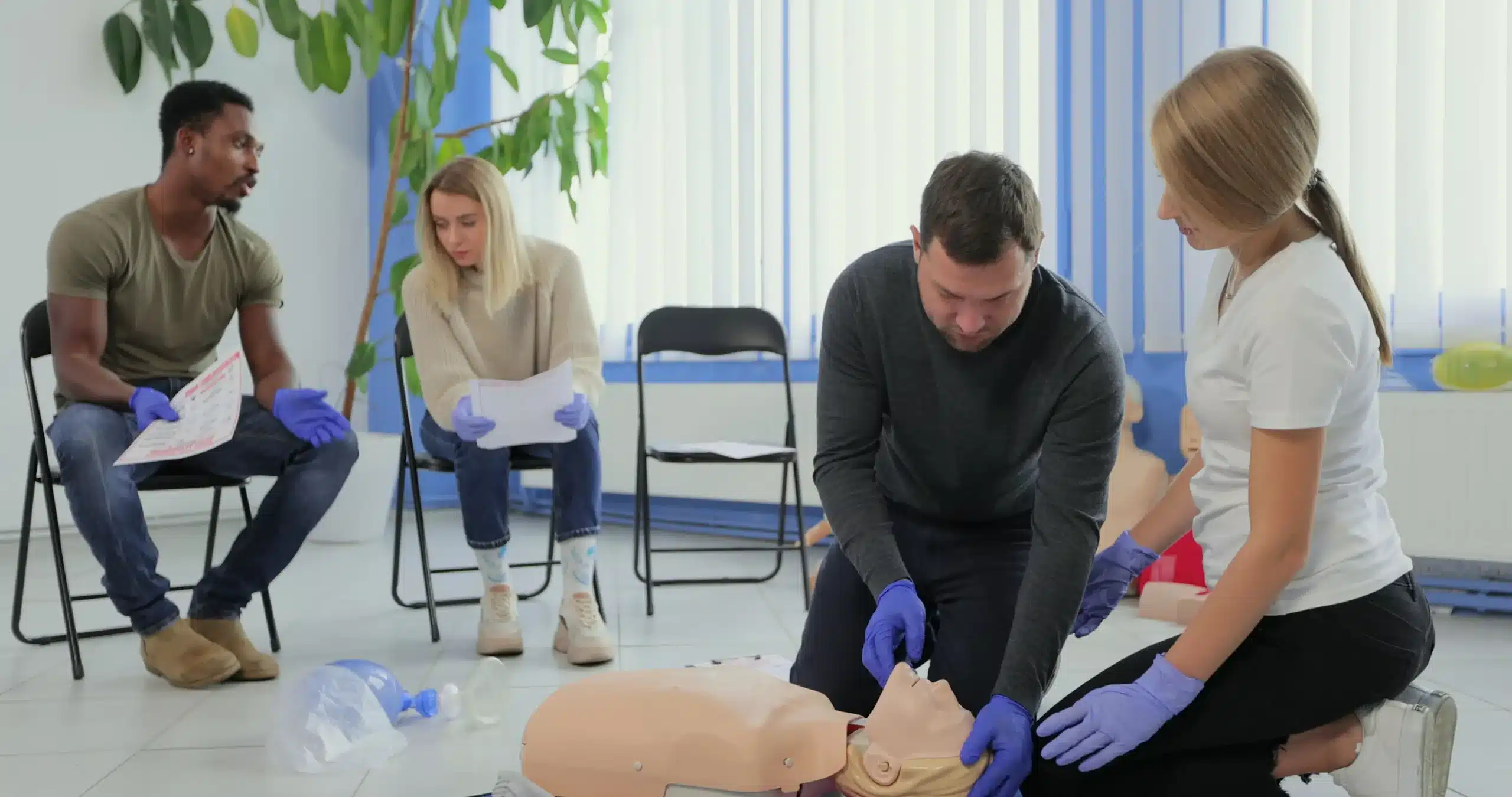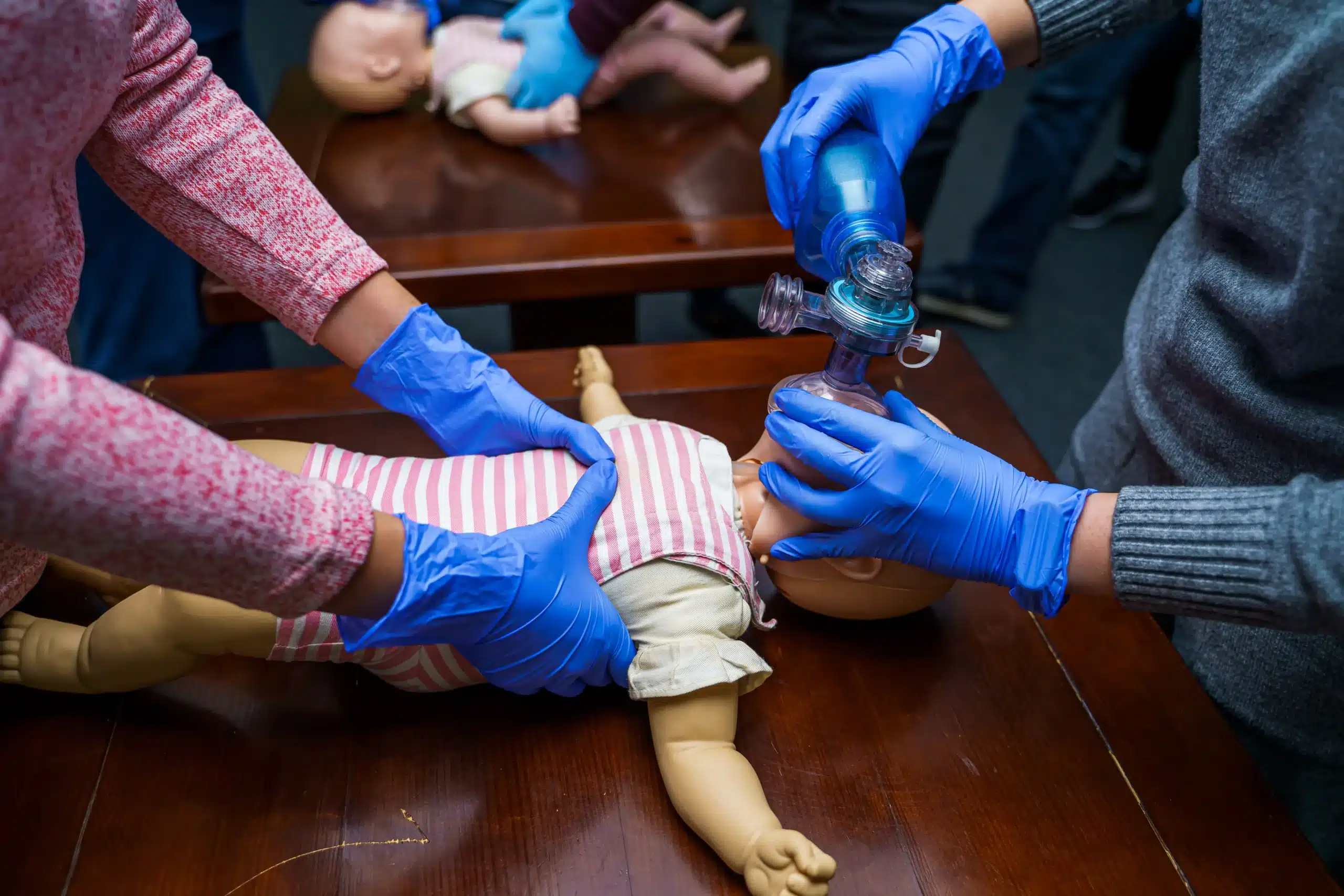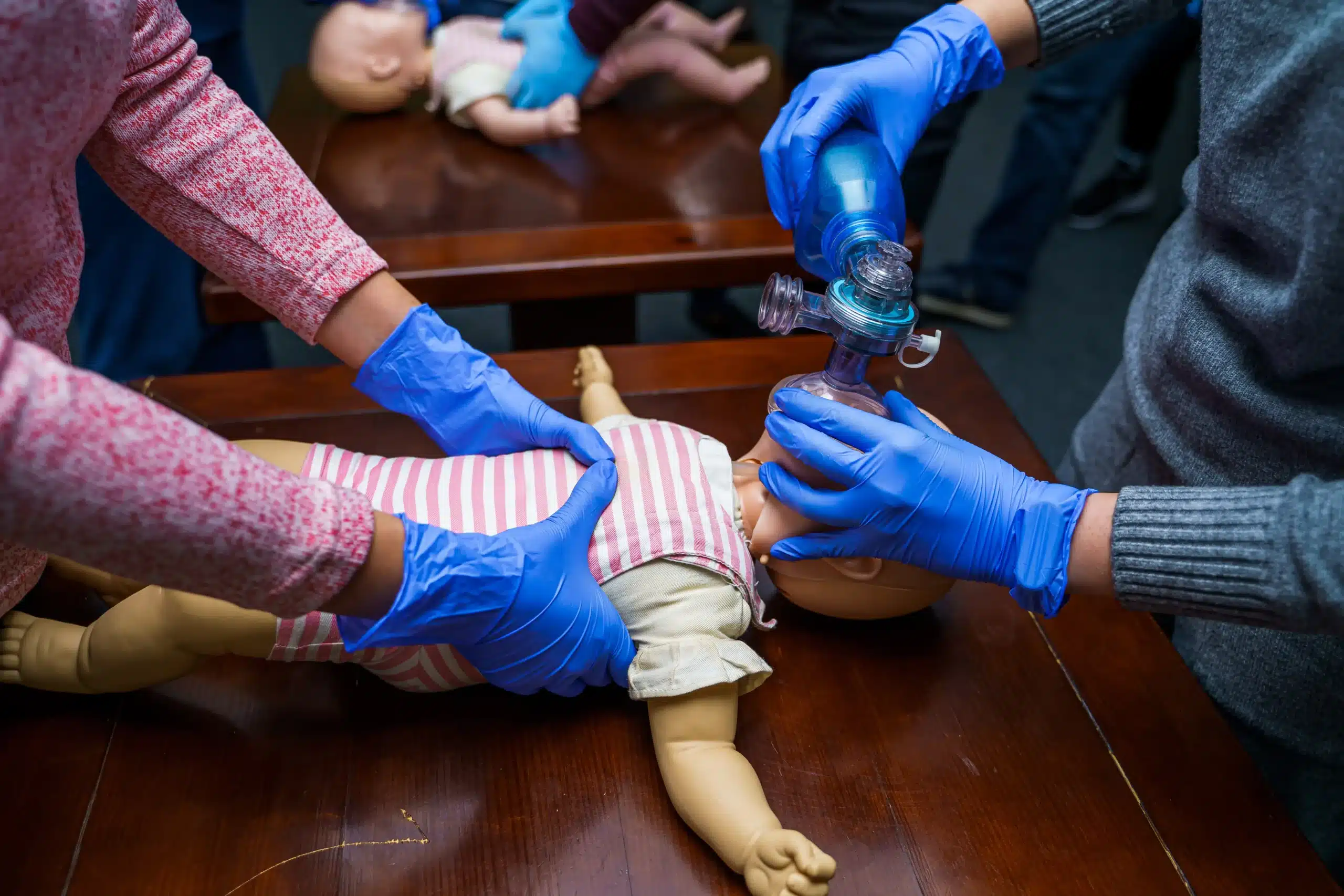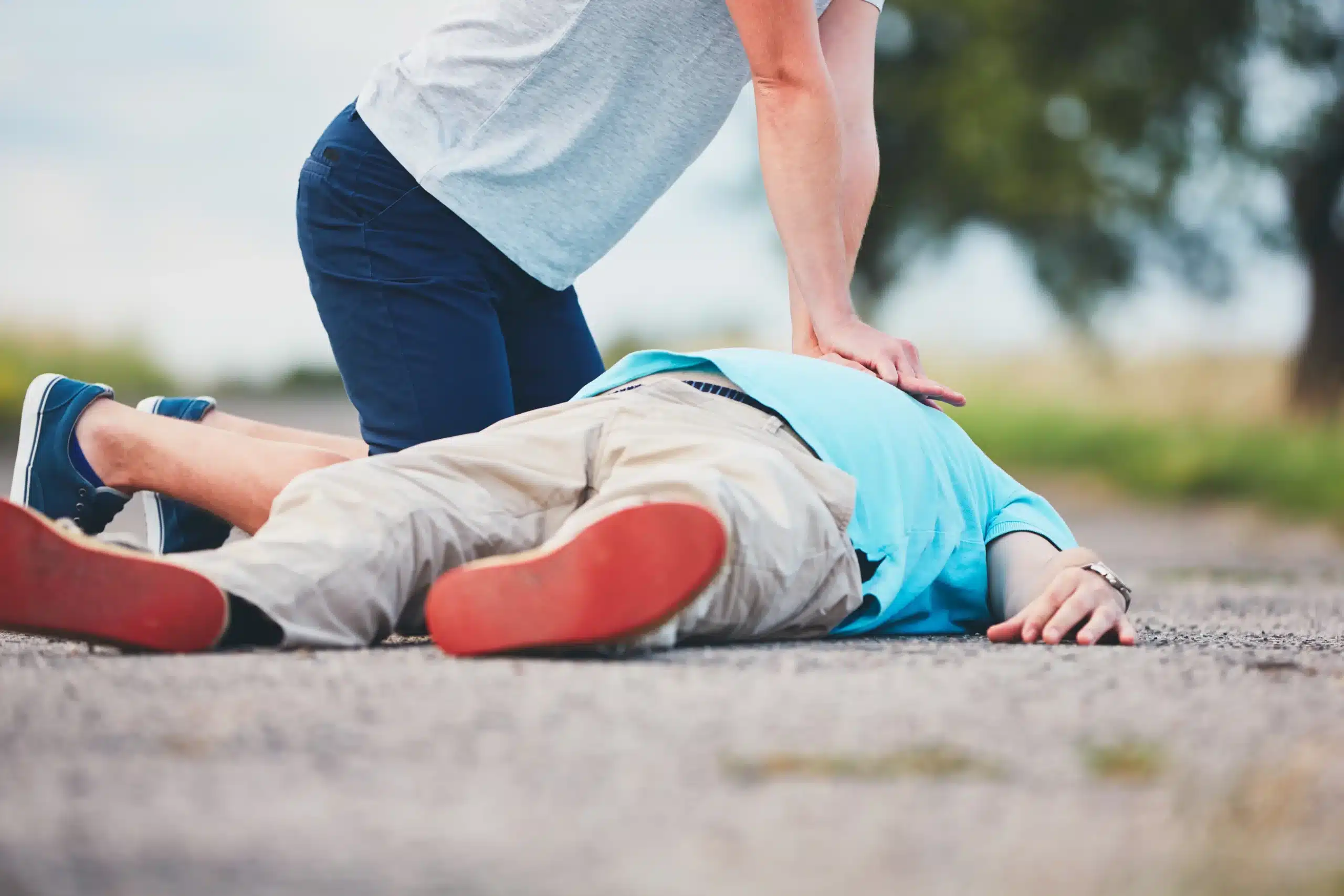Emergencies can happen anytime, anywhere. Being equipped with CPR skills can transform you into a vital first responder in those critical moments. This guide is your roadmap to understanding and accessing CPR training, including finding “CPR courses near me.” We’ll explore the different types of CPR certifications, the core skills you’ll learn, and how to choose the right course for your personal or professional goals. We’ll also discuss the importance of keeping your skills current and provide resources for finding reputable training providers in your area. Whether you’re a healthcare worker, a community member, or simply someone who wants to make a difference, this guide will empower you to take action and be prepared for whatever comes your way.
Key Takeaways
- CPR skills empower you to make a difference: Learning CPR, whether for personal or professional reasons, equips you to respond effectively in emergencies and potentially save lives. Explore various course options to find one that fits your schedule and specific needs.
- Select the right CPR course for your goals: Determine which type of certification aligns with your requirements, such as basic CPR, BLS, ACLS, PALS, or specialized training. Prioritize courses from recognized organizations like the American Heart Association or American Red Cross.
- Stay current with your CPR training: Regular recertification ensures you’re up-to-date on the latest techniques and best practices. Refreshing your skills maintains your preparedness and confidence to act quickly in critical situations.
Why CPR Training Matters
CPR training empowers you with the skills to respond effectively during emergencies. From healthcare providers to everyday people, the ability to administer CPR can make a profound difference. CPR certification instills confidence and prepares you to act quickly and decisively when every second counts. Knowing how to perform CPR can transform you into a vital link in the chain of survival, potentially saving a life. It’s about being prepared, taking action, and making a real difference.
Life-Saving Skills at Your Fingertips
For healthcare professionals, CPR training is essential for maintaining high standards of patient care. It ensures you can deliver immediate assistance in critical situations, stabilizing patients until further medical help arrives. Regular training also keeps your skills current, reflecting the latest CPR guidelines and best practices. Beyond the medical field, CPR training equips anyone to respond to emergencies involving family, friends, or even strangers. This knowledge empowers individuals to take action and provide immediate support when it matters most. Consider CPR training an investment in yourself and your community—it’s a skill that can bring confidence and peace of mind, knowing you’re prepared for whatever comes your way.
Choosing the Right CPR Course
Knowing which CPR class is right for you can feel overwhelming with so many options. This section breaks down the different types of CPR courses, what to expect time-wise, and how to make sure your certification is valid.
CPR Course Types
CPR courses cover core life-saving techniques like Cardiopulmonary Resuscitation (CPR), Basic Life Support (BLS), Advanced Cardiovascular Life Support (ACLS), and Pediatric Advanced Life Support (PALS). Many also include First Aid training. It’s important to choose the course that aligns with your personal or professional needs. For example, healthcare providers often require ACLS certification, while childcare providers in California need specific training that meets EMSA Child Care Health & Safety requirements. Merced CPR Classes offers a range of American Heart Association (AHA) certified courses designed for various professions and situations.
Course Length and Options
CPR courses are designed to be accessible, even for busy schedules. A typical CPR class takes about three hours. If you’re a healthcare professional needing BLS, ACLS, and PALS certifications, look into programs like the Resuscitation Quality Improvement (RQI) program, which can offer a more streamlined approach to training and certification. This can be especially helpful for managing busy schedules and staying current with certifications.
Certification and Validity
Your CPR certification will generally be valid for two years. You can usually recertify through a shorter refresher course when the time comes. If in-person classes don’t fit your schedule, online CPR certifications are also an option. Just make sure the online program is issued by a reputable organization accredited by the American Heart Association (AHA) or the American Red Cross (ARC) to ensure it meets the necessary standards. This flexibility lets you choose the learning format that works best for you.
What Happens in CPR Training?
CPR training blends learning key concepts with practicing those skills until they become second nature. It’s designed to give you the knowledge and confidence to act quickly and effectively in an emergency.
Course Structure and Content
CPR courses typically start by introducing the basics of cardiopulmonary resuscitation (CPR). You’ll learn to recognize the signs of a cardiac arrest and activate the emergency response system. The curriculum covers core techniques like chest compressions, rescue breaths, and how to use an automated external defibrillator (AED). Many courses also integrate training for basic life support (BLS), advanced cardiovascular life support (ACLS), and pediatric advanced life support (PALS), providing a well-rounded skill set for various emergencies. Merced CPR Classes offers a range of American Heart Association (AHA) certified courses covering these essential life-saving practices.
Hands-on Practice and Skills Assessment
The most important part of CPR training is hands-on practice. You’ll work with mannequins and training AEDs to simulate real-life scenarios. This practical training helps build muscle memory and confidence, allowing you to react calmly and efficiently under pressure. Comprehensive courses often include realistic scenarios and simulations, giving you the chance to apply your skills in a controlled environment. Instructors provide feedback and guidance, ensuring you master the correct techniques. Throughout the course, your skills will be assessed to ensure you meet the requirements for certification.
What to Bring
While your CPR training provider will supply the equipment, there are a few things you might want to bring for your own comfort. A notebook and pen can be helpful for taking notes. Dress comfortably in layers, as the temperature in the training room can vary. Bringing a water bottle is always a good idea to stay hydrated, especially during hands-on practice. And, don’t forget to check for any promotional codes to help you save on the already affordable training offered in Merced.
Find a Local CPR Training Provider
So, you’re ready to learn CPR? Great! Finding the right class is easier than you think. This section breaks down how to choose a course, understand associated costs, and find reputable providers near you.
Choosing a Course
First, think about why you want to learn CPR. Are you a healthcare professional needing American Heart Association (AHA) BLS certification? Do you need First Aid training for your job? Or are you a parent wanting to feel prepared for emergencies at home? Knowing your “why” helps you pick the right course. Merced CPR Classes offers various AHA-certified courses, including BLS, ACLS, PALS, and First Aid. They also offer training that meets California EMSA requirements for childcare providers.
Cost and Discounts
CPR training is an investment in yourself and your community. Costs vary depending on the course type and provider. Look for providers, like Merced CPR Classes, that offer a low-price guarantee and explore options for discounts. Group discounts are often available, making training more affordable if you’re signing up with friends, family, or coworkers.
Top Local CPR Providers
Finding a reputable provider is key. Here are a few options to explore:
Merced CPR Classes
Merced CPR Classes offers a comprehensive range of AHA certification courses, including CPR, BLS, ACLS, PALS, and First Aid. They focus on providing high-quality, affordable training in a supportive environment.
American Red Cross
The American Red Cross is a well-known provider of CPR and First Aid training. They offer various courses and certifications, often with flexible scheduling options.
American Heart Association
While the AHA doesn’t directly teach courses, they set the standards for CPR training. Look for training centers, like Merced CPR Classes, that offer AHA-certified courses. This ensures you’re learning the most up-to-date and evidence-based techniques.
Local Hospitals and Community Centers
Many hospitals and community centers offer CPR and First Aid classes. These can be a convenient and affordable option, especially for community members. Check with your local hospital or community center for upcoming courses. You can also explore other CPR and First Aid class options in Merced.
Keep Your CPR Skills Sharp
CPR isn’t a learn-it-and-forget-it skill. Regularly refreshing your training is crucial for providing effective, life-saving care. Let’s explore why staying current with your CPR certification matters.
Why Recertify?
CPR guidelines and best practices evolve. Recertification ensures you’re up-to-date on the latest techniques, giving you the confidence to respond effectively in a real emergency. Plus, maintaining a current certification demonstrates your commitment to providing high-quality care, which is essential for many healthcare professionals and other roles. It’s about more than just checking a box—it’s about being truly prepared to make a difference when it matters most. Think of it like renewing your driver’s license—it proves you’ve got the current knowledge and skills. CPR recertification does the same for life-saving procedures. Check out our CPR course preparation page to get a head start.
Continuing Education
Beyond the core skills, continuing education in CPR often covers related topics like using an AED, recognizing the signs of a stroke, and providing first aid. These supplementary skills can be invaluable in various emergency situations. Continuing education also offers a chance to practice your skills in a safe and controlled environment, reinforcing your muscle memory and boosting your confidence. Think of it as a tune-up for your life-saving abilities. Regular practice keeps your skills sharp and ensures you can react quickly and efficiently under pressure. Merced CPR Classes offers a variety of courses to help you stay at the top of your game.
Using CPR in Real Life
Knowing CPR can empower you to act quickly and decisively in a crisis. It equips you with the skills and confidence to provide immediate assistance while waiting for professional medical help to arrive. This rapid response can significantly improve the chances of survival for someone experiencing cardiac arrest. Studies have shown that bystander CPR can double or even triple a person’s chance of survival. Knowing you have the skills to potentially save a life brings peace of mind, not just for you, but for your family and community as well. Consider taking a CPR class – you never know when you might need it.
Related Articles
- Why CPR is a Lifesaving Skill in Healthcare
- Why CPR is Important in Healthcare – Merced CPR Classes
- CPR Classes in Merced: Your Complete Guide – Merced CPR Classes
- CPR Certification in Atwater: Your Guide – Merced CPR Classes
Frequently Asked Questions
What is the difference between BLS and CPR? CPR (Cardiopulmonary Resuscitation) focuses on chest compressions and rescue breaths, the core techniques for reviving someone in cardiac arrest. BLS (Basic Life Support) builds upon CPR, adding essential skills like using an AED, relieving airway obstructions, and understanding the chain of survival. Think of CPR as a core component within the broader scope of BLS.
How long does a CPR certification last, and how do I renew it? CPR certifications are typically valid for two years. Renewal involves taking a recertification course, which is often shorter than the initial certification course. This refresher course covers any updates to guidelines and allows you to practice your skills. Check with your certifying organization or training provider like Merced CPR Classes for specific recertification requirements.
What if I can’t attend an in-person CPR class? Online CPR certification courses offer a flexible alternative to traditional classroom settings. However, it’s crucial to choose a reputable online program accredited by a recognized organization like the American Heart Association (AHA) or the American Red Cross. These programs often combine online learning with in-person skills testing to ensure you meet the necessary standards for certification.
How much does CPR training cost, and are there any discounts available? The cost of CPR training varies depending on the course type, location, and training provider. Many providers offer discounts for groups, making it more affordable to train with friends, family, or colleagues. Some organizations also provide financial assistance programs or discounted rates for specific groups. It’s always a good idea to contact the training provider directly to inquire about pricing and available discounts. Merced CPR Classes, for example, offers a low-price guarantee and often has special promotions.
What should I expect during a CPR training class? CPR training involves both classroom instruction and hands-on practice. You’ll learn the essential techniques of CPR, including chest compressions, rescue breaths, and how to use an AED. The course will also cover recognizing the signs of a cardiac arrest and activating the emergency response system. Expect to actively participate in simulated scenarios using mannequins and training AEDs to build your skills and confidence.






